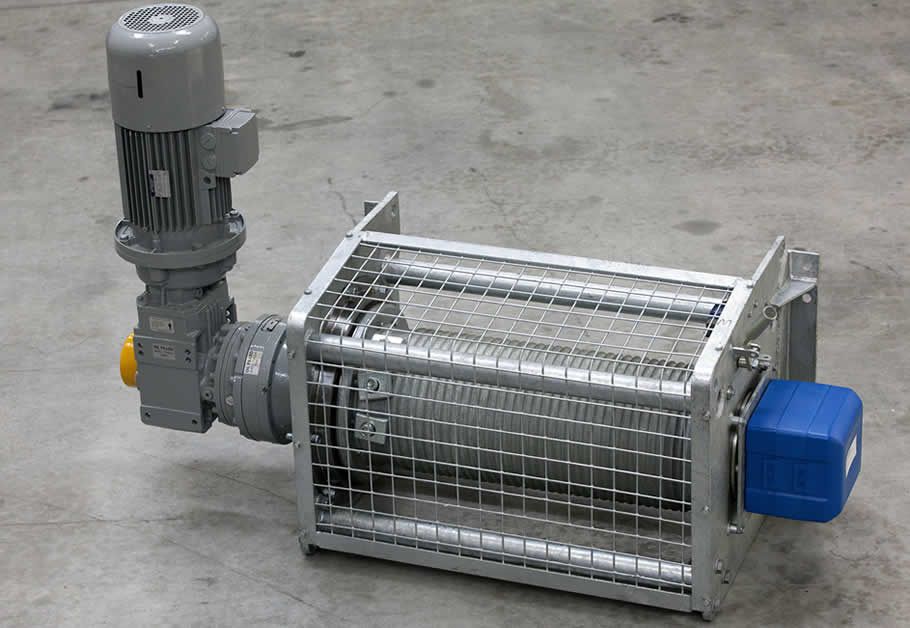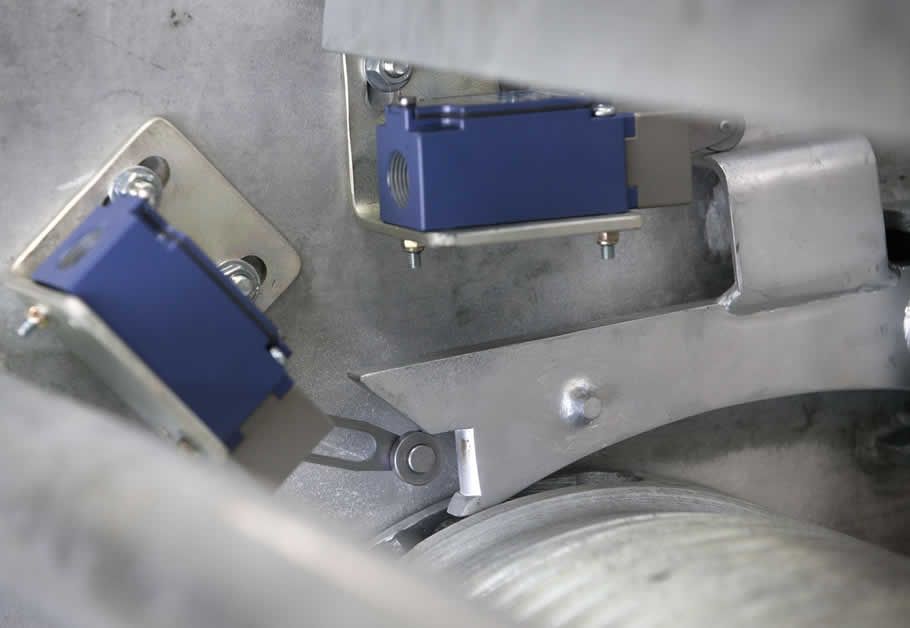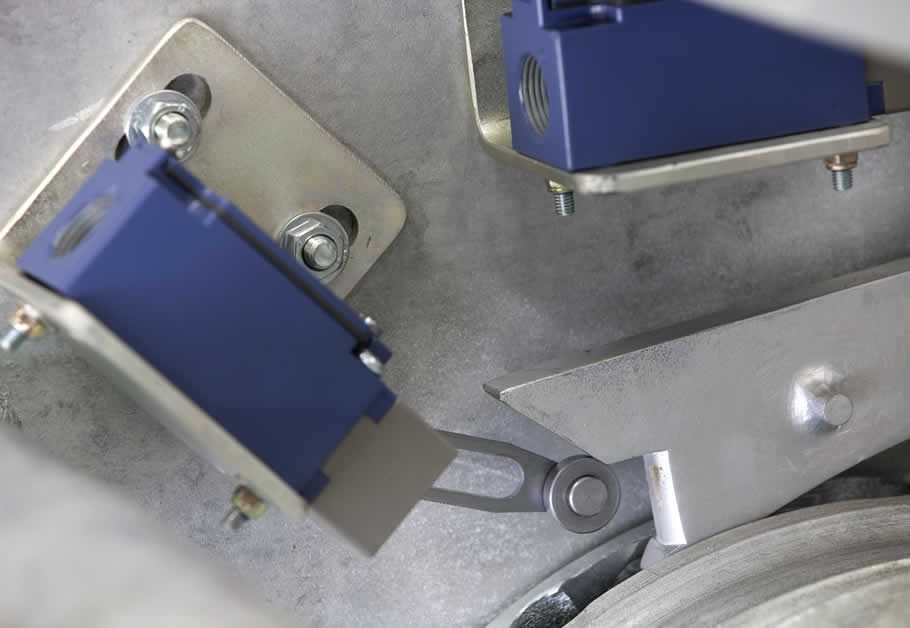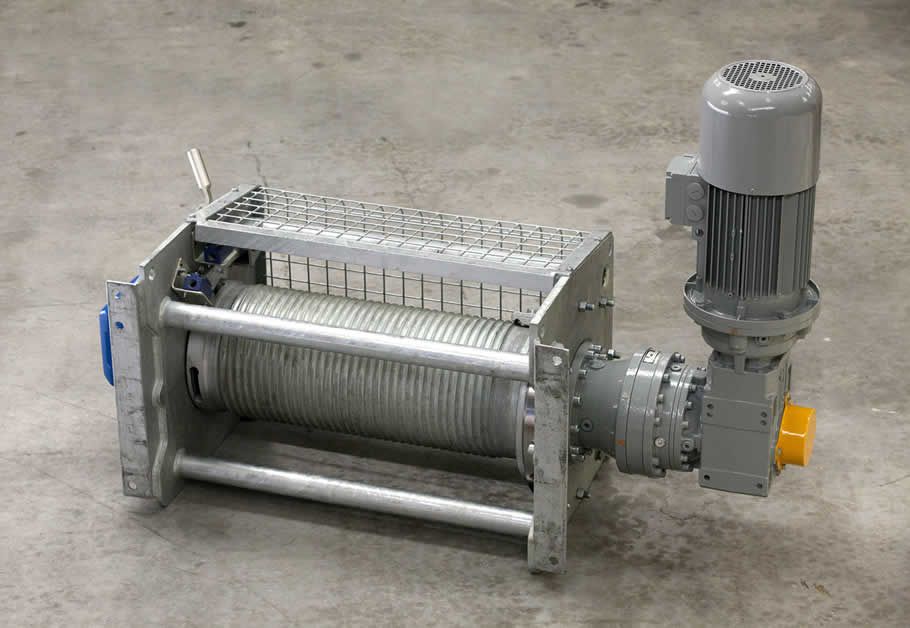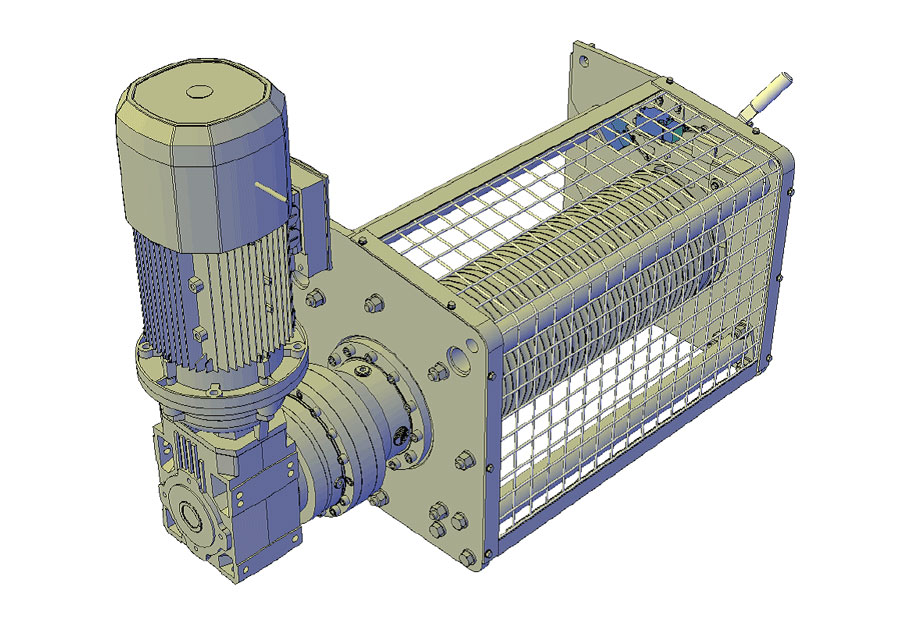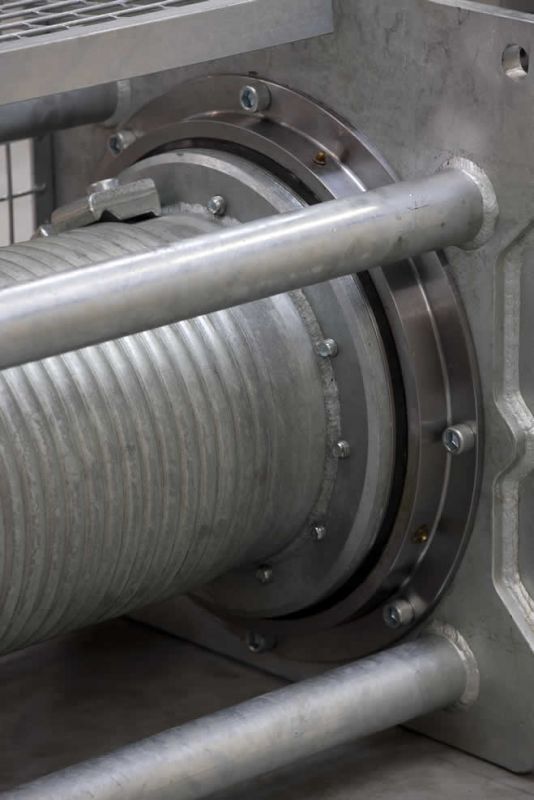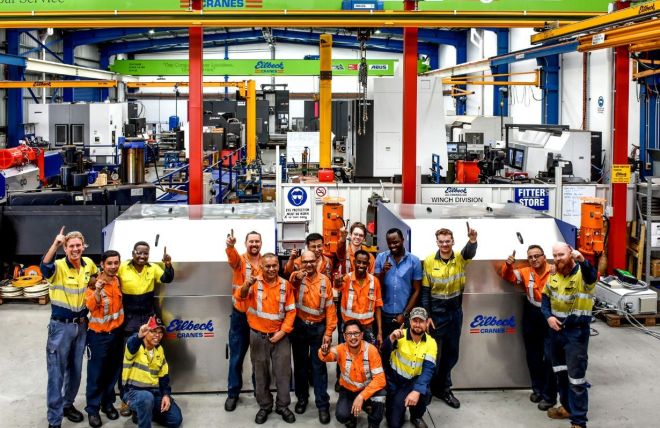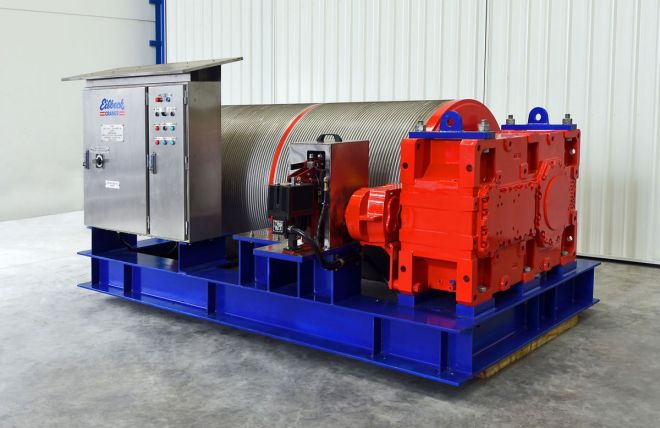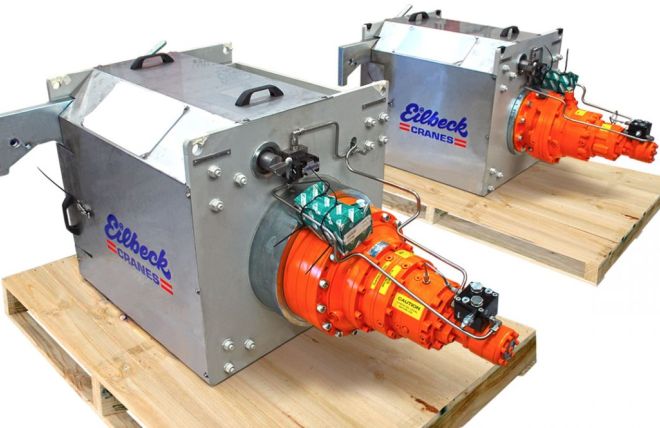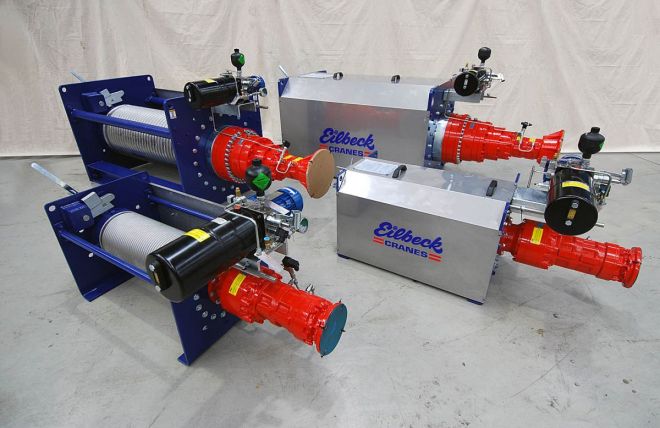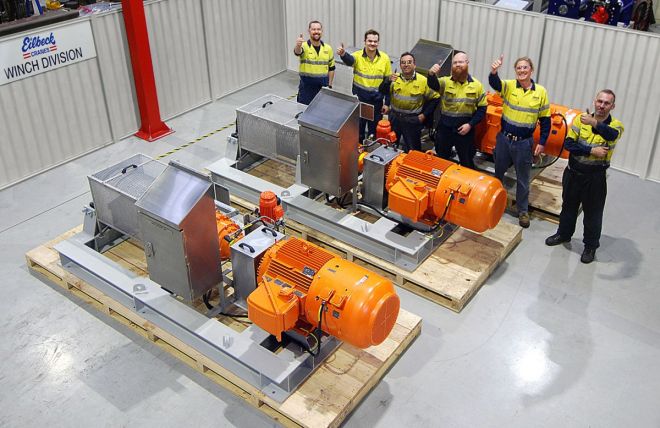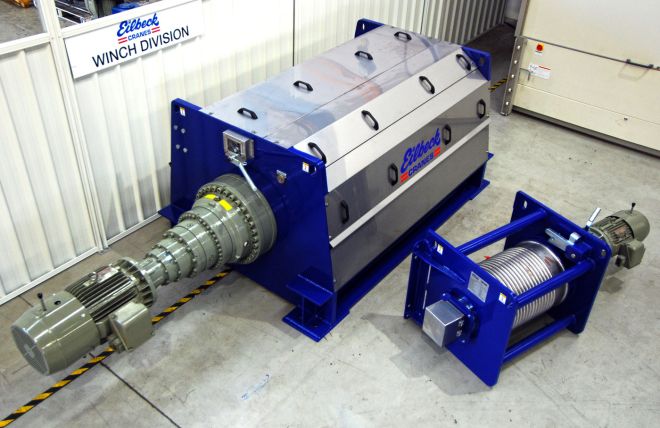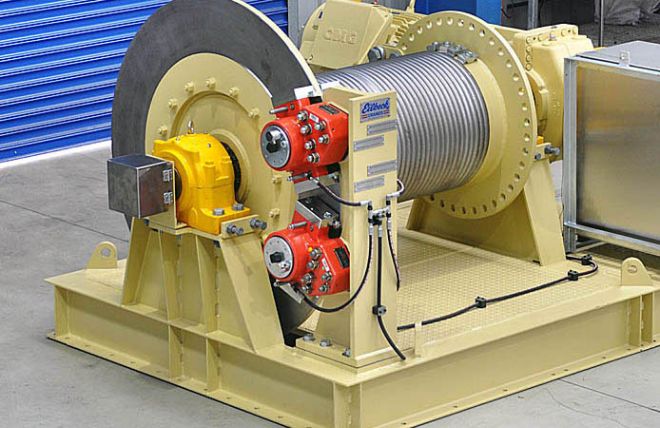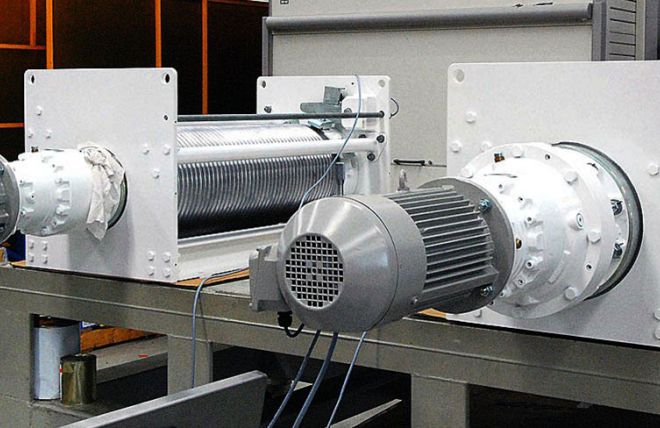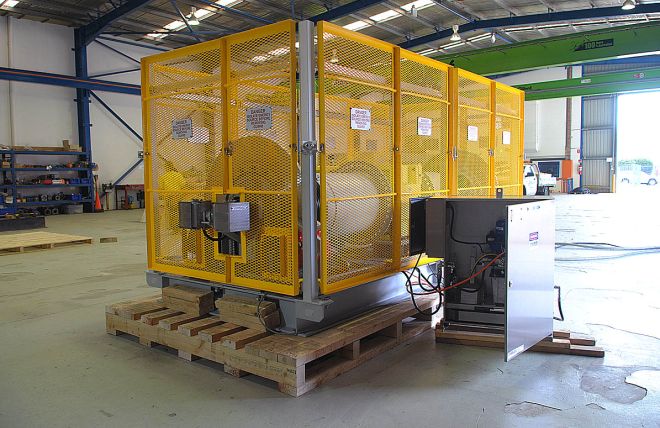Conveyor Take-up Winches
| Project Ref: | 84936 |
| Client: | Cliffs Asia Pacific Iron Ore Pty Ltd |
| Project: | Koolyanobbing Ore Handling Plant 11MTPA Upgrades |
| Scope: | 55kN & 40 kN M.R.C. Conveyor Take Up Winches |
Ratchet & Pawl Brake System Functional Description
Overview
The Ratchet & Pawl Brake System (RPBS) is a combination of a manually operated holding Pawl/Ratchet & a semi-automated brake motor. The following document is a Functional Description of the brake & holding components & how these interface with the hoist drum.
Startup
In the powered down state, the Pawl is positively engaged into the ratchet slot located on the side of the hoist drum. All pulling forces on the wire rope are transferred from the ratchet slot to the pawl, which in turn isolates the geared motor from the counterweight forces. Before operating the hoist, the operation manual must be read & all pre-start procedures/checks completed. Only authorised personnel should operate the system. Check the status of the emergency stop & reset if required. The hoist will not be able to begin any motion if the emergency stop is depressed.
Sequences
HAUL IN – [PRESS RAISE] on the Operator Panel
The hoist geared motor will energise, release its failsafe electromechanical brake & rotate the hoist drum in the direction of hauling in the wire rope. The Hoist Ratchet Slot will rotate away from the Pawl, thus disengaging the Pawl. The Pawl will continue to interface with each ratchet slot, through a rise & fall motion as the hoist drum rotates. If the hoist Normally Closed Upper Working Limit Switch opens or the Normally Closed Emergency Stop is depressed the HAUL IN [RAISE] motion will stop.
PAYOUT – [PRESS LOWER] on the Operator Panel
The Pawl Disengaged Limit Switch[Normally Open] must be in the closed position AND the Pawl Engaged Limit Switch[Normally Closed] must be in the closed position to allow the hoist drum to begin the PAY OUT [LOWER] motion. For both these limit switch conditions to occur the Pawl must be located well clear of the ratchet slots on the hoist drum in the fully disengaged position.
The hoist geared motor will energise, release its failsafe electromechanical brake & rotate the hoist drum in the direction of PAYING OUT [LOWER] the wire rope.
If the Hoist Lower Working Limit Switch[Normally Closed] opens or the Normally Closed Emergency Stop is depressed the PAY OUT [LOWER] motion will stop. If the Pawl Disengaged Limit Switch[Normally Open] opens or the Pawl Engaged Limit Switch[Normally Closed] opens the motion will stop.
ENGAGE THE PAWL & RATCHET – [ACTIVATE THE BRAKE HAND RELEASE] on the Hoist Geared Motor
If the counter weight position is considered correct for operational &/or maintenance purposes, the Pawl must be relocated into the ratchet slot and the hoist drum payed out manually so the counterweight force is transferred from the ratchet slot face to the pawl face. IE: The Ratchet & Pawl are ‘hard up’. This process is not selectable by electronic control & as such, is not a motion in which the hoist motor is energised.
With the Pawl lowered into an adjacent ratchet slot as shown in below view, release the manual override brake lever located at the rear of the hoist brake motor. This release operation should be completed in a pulsing style, which allows the brake to engage & release over a number of high speed cycles which in turn reduces the acceleration due to gravity, take up speed & shock load of the Pawl & Ratchet slot faces coming together at elevated speed. With this final operation complete, the geared brake motor is isolated from the counter weight forces, which significantly increases the long term use of these components.
